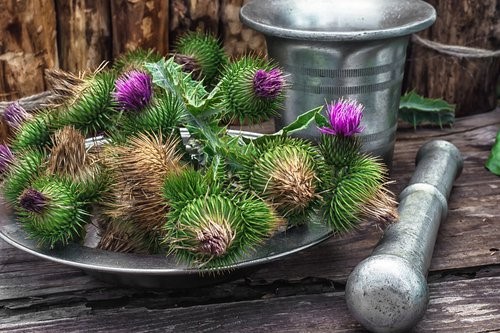The ancient Greek and Romans have been using milk thistle and its extracts for over 2000 years. The primary source of silymarin is milk thistle. 70% of milk thistle is composed of silymarin. The seeds of milk thistle have the maximum amount of silymarin in them. Silymarin is a complex flavonoid made of taxifolin, silychristin, silibinin, silibinin A and silybin B. The best and easiest way of extraction of silymarin is by the use of water. Water is easily obtained and is not an expensive solvent. It is eco-friendly and milder too. Water at 100-degree Celsius gives the maximum yield. In the past, alcohols have been used for extraction of silymarin from milk thistle. Before removal by this method, defatting of the seeds is required to be completed. But the difference in the alcohols leads to the difference in yield of the compound. Hence there was always an inconsistency between the value marked on supplements and the actual amount present. It is only in the recent past that water has been identified as an ideal solvent for the extraction of silymarin from silybum marianum. Water does not need prior defatting. Water at very high temperature (like 250-degree Celsius) displays properties of ethanol and methanol. About 200 minutes of extraction using water at 100-degree Celsius gives excellent yield of silymarin.

Plants Containing Silymarin
- The richest source of silymarin is Milk thistle or Silybum marianum. Silymarin extract is commonly called milk thistle extract because almost 3/4th of the seeds of milk thistle is silymarin. The highest concentration of silymarin is found in the seeds, but it is also present in stems, flowers and roots. Extraction is mainly done from the seeds. All part of Silybum are used for medicinal purposes like the roots, stems, leaves, fruit and seed. These used to grow mainly in Southern Europe and Asia, but now they are found all over the world. Since they grow without much care, these plants are sometimes considered weeds.
- Silymarin has been extracted from some wild artichokes (Cynara Scolymus) too. These are also members of the thistle family. Silymarin is present in significant amounts in these plants. The consumption of these artichokes has shown to have protective action. The antioxidants found in the plant help in reducing free radicals in the blood stream.
- Cilantro, also called as coriander leaf in some parts of the world, contains silymarin. These leaves are usually used as a seasoning in many dishes around the world. Silymarin is also found in the seeds of coriander.
- A part of most curries, turmeric, is also a source of silymarin. The root is ground into fine powder. These are a part of Asian cooking here.
- Trace amounts of Silymarin are found, grapes, beets, peanuts and yeast. Small quantities are present in the roots and rhizomes of black cohosh. In ancient times, this plant was used to relieve menstrual cramps. Hence, it is believed that silymarin has the property to relieve menstrual pain and give relief.










Comments are closed.